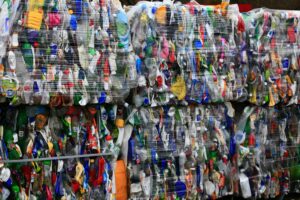Strength in Numbers: Long Term Solutions for CO2 Reuse
Industrial clusters are geographic concentrations of interconnected companies, benefiting from shared infrastructure. For CO2 reuse, this creates a wider set of opportunities to connect elements along the carbon, capture, utilization, and storage (CCUS) value chain.
Standalone projects have been challenged by having to finance all the related infrastructure costs. One example is the first commercial-scale CCUS project at Boundary Dam which captures 1 million tons per year of CO2 from SaskPower’s coal-fired power for use in enhanced oil recovery (EOR). Following completion, it was concluded that the project will result in a total of $500-million net losses for the project developers and the region’s power consumers. Other standalone projects have also proven uneconomical for similar reasons.
Tapping into infrastructure that serves numerous stakeholders enables opportunities to both establish smaller capture facilities where standalone CCUS is typically uneconomical, as well as encourage new CCUS activities within the industrial cluster. New CO2 utilization technologies beyond EOR that provide alternative long-term solutions are taking advantage of these clusters.

The Port of Antwerp is the largest chemical cluster in Europe and is currently in the feasibility stage of developing a CCUS cluster at the port. The initial stages will transport the CO2 by pipeline or ship for storage with planned future reuse. They have recognized that a port-wide approach is needed for mitigating CO2 emissions and realized that CCUS in the industrial cluster could have a significant role. Short term solutions are focused on looking at developing a CO2 pipeline to Bruges, which would pump CO2 into the North Sea. While the study looks to storage and EOR as a short-term goal, they see potential for other CO2 reuse methods in around 10 years and would consider sucking the CO2 back up through the pipes into the cluster, to be then converted into high-value products with additional revenue streams for the Port’s stakeholders. A waste-to-value reuse solution is viewed as the ultimate long-term solution.
 Likewise, in the UK there are plans for an ICCS cluster in the Tees Valley. The industrial cluster is responsible for 22% of the UK’s manufacturing emissions. The project is still in planning phase, which includes CO2 capture systems as well as a large pipeline infrastructure. EOR is being looked at for the first stage; however CO2 Mineralization, CO2 to Fuel, and CO2 to Chemical productions technologies are also being considered. The UK had slowed its $1.3 billion fund for CCUS technology in 2015 but reaffirmed commitment to CCUS last year, announcing £100M to fund CCUS innovation and deployment. With the UK committed to reducing emissions by at least 80% by 2050, mitigation methods are being taken more seriously today. Similarly to Antwerp, only developed CO2 reuse technologies will be utilized first. However, there are opportunities for many of the large steel, chemical and energy corporates within the cluster to find new revenue streams with partnerships with new CO2 reuse startups once the ICCS clusters are up and running within the next decade.
Likewise, in the UK there are plans for an ICCS cluster in the Tees Valley. The industrial cluster is responsible for 22% of the UK’s manufacturing emissions. The project is still in planning phase, which includes CO2 capture systems as well as a large pipeline infrastructure. EOR is being looked at for the first stage; however CO2 Mineralization, CO2 to Fuel, and CO2 to Chemical productions technologies are also being considered. The UK had slowed its $1.3 billion fund for CCUS technology in 2015 but reaffirmed commitment to CCUS last year, announcing £100M to fund CCUS innovation and deployment. With the UK committed to reducing emissions by at least 80% by 2050, mitigation methods are being taken more seriously today. Similarly to Antwerp, only developed CO2 reuse technologies will be utilized first. However, there are opportunities for many of the large steel, chemical and energy corporates within the cluster to find new revenue streams with partnerships with new CO2 reuse startups once the ICCS clusters are up and running within the next decade.
Another early stage concept is based within The Shenzhen City area. The cluster could support up to 45 MT of CO2 has been proposed which could serve adjacent industrial actives along the Pearl River Delta and Hong Kong. Despite China’s progress in renewables, the country is still responsible for 28% of the world’s annual emissions. Decoupling emissions from economic growth (which increased 6.9% last year) is not likely without utilizing CCUS, therefore China has plans to reposition itself as a leader in CCUS in the coming years. A few major standalone projects have pushed China forward and CO2 reuse technologies could be the next step.
Challenges
Today, in many countries carbon prices have remained too low to provide sufficient investment in CCUS. Even if carbon prices improve, the uncertainty in how they will fluctuate holds investment back. Risk sharing across private and public stakeholders could help to insulate against volatility. Through government support, the hope is that early ICCS infrastructure could act as a catalyst to encourage and accelerate interest and investment in CCUS from private industrial players.
Governments need to address regulatory and legal hurdles. The London Convention and Protocol, for example, poses a barrier to the transboundary movement of CO2. Additionally, cluster development would need to be supported through more CCUS-specific laws, which are currently lacking globally. Governments need to be careful not to increase carbon leakage when developing future CCS policy framework. This is an issue brought about when industries choose to relocate to other countries in response to new emission policies negatively impacting their business. Relocation can ultimately lead to unfavorable economic activities and increased emissions in other countries.
Outlook
While the specific business models that come into play across different clusters will vary depending on the characteristics of the cluster, there will be emerging opportunities for CO2 reuse technologies. Existing industrial clusters have the potential to benefit from increased revenue streams and also from the increased lifetime of existing assets. In additional to commercializing technologies, laws, policies, and regulations will need to be updated to truly accommodate to stable growth of the industry, and when they do, countries will be able to decouple economic growth from emissions.
We only touched on edges of ICCS activity, so be sure to check out the Global CCS Institute and the IEAGHG for a more detailed view of the space.


